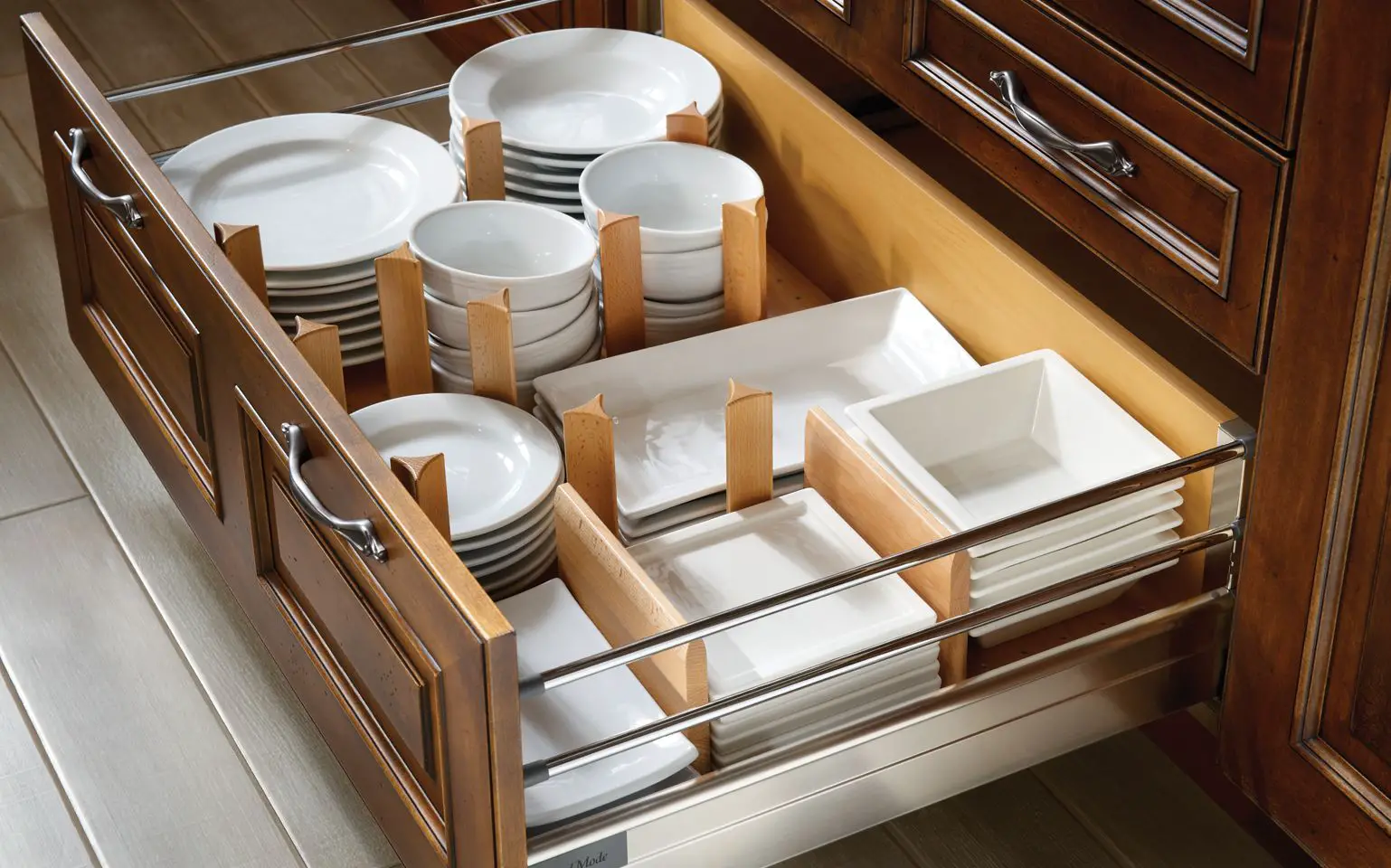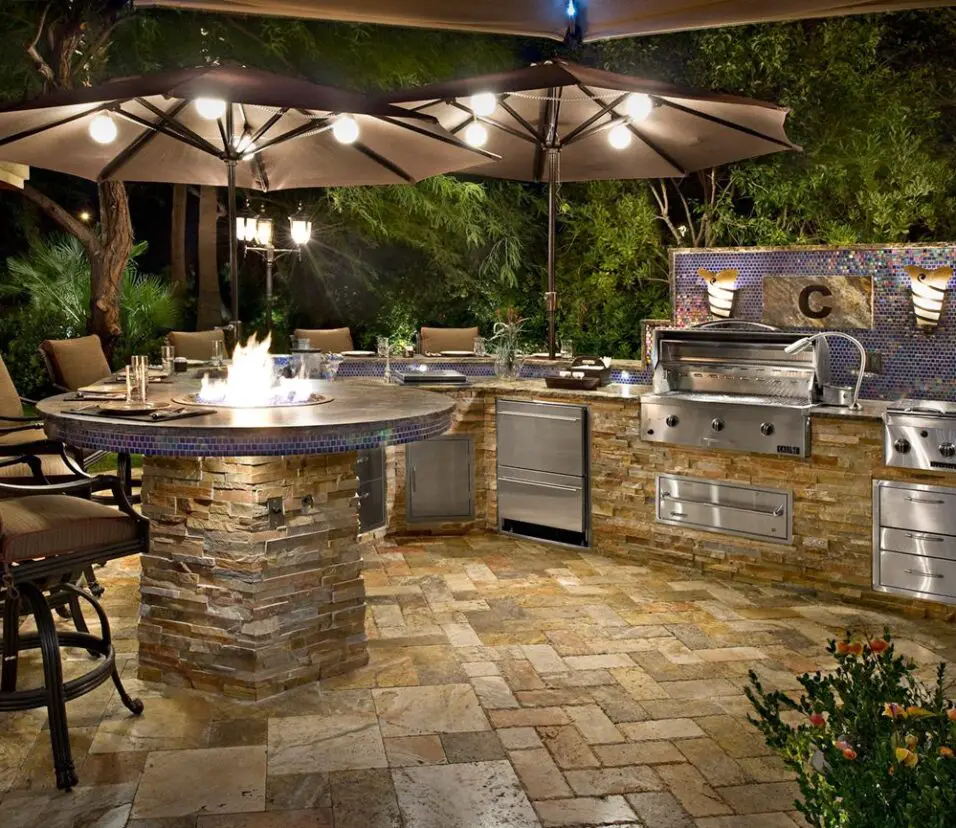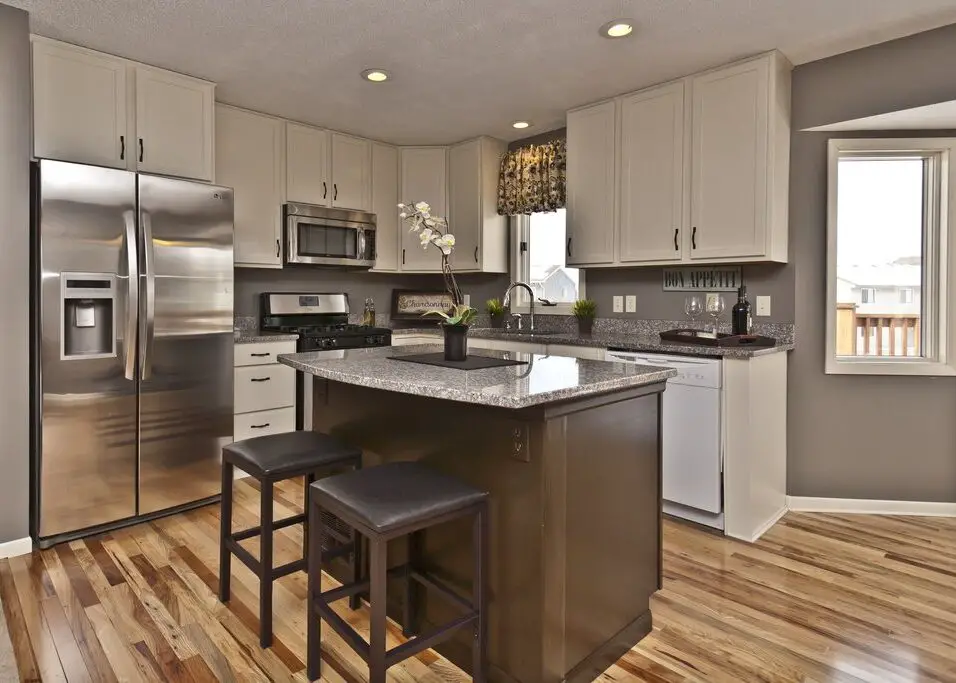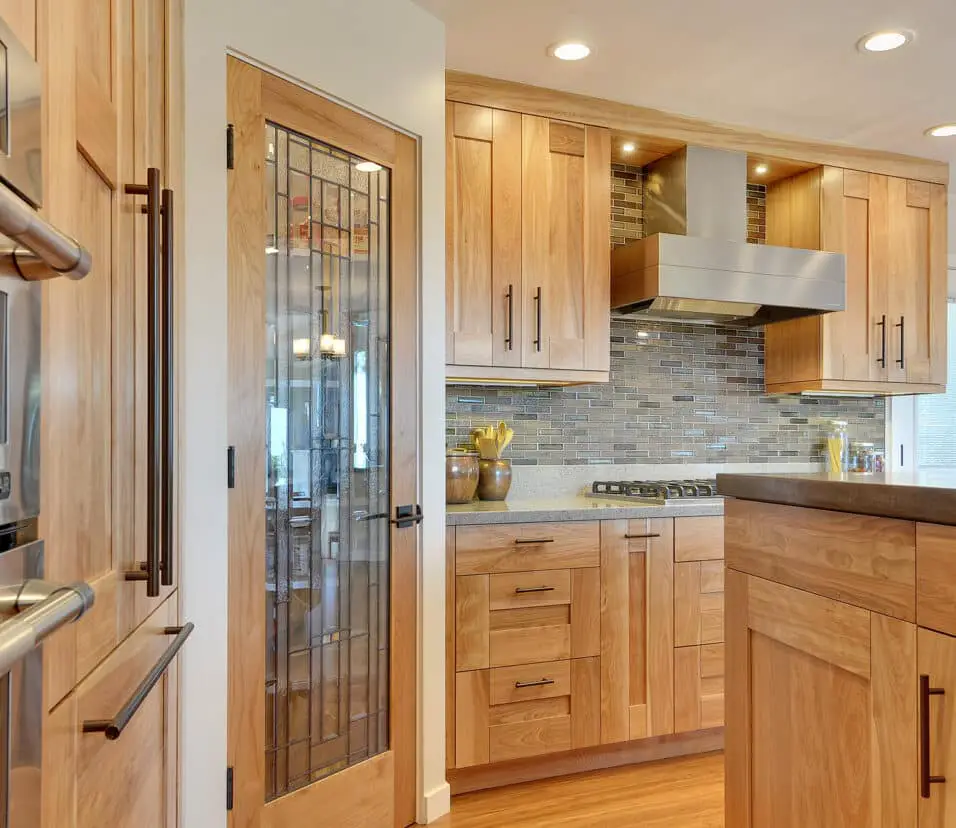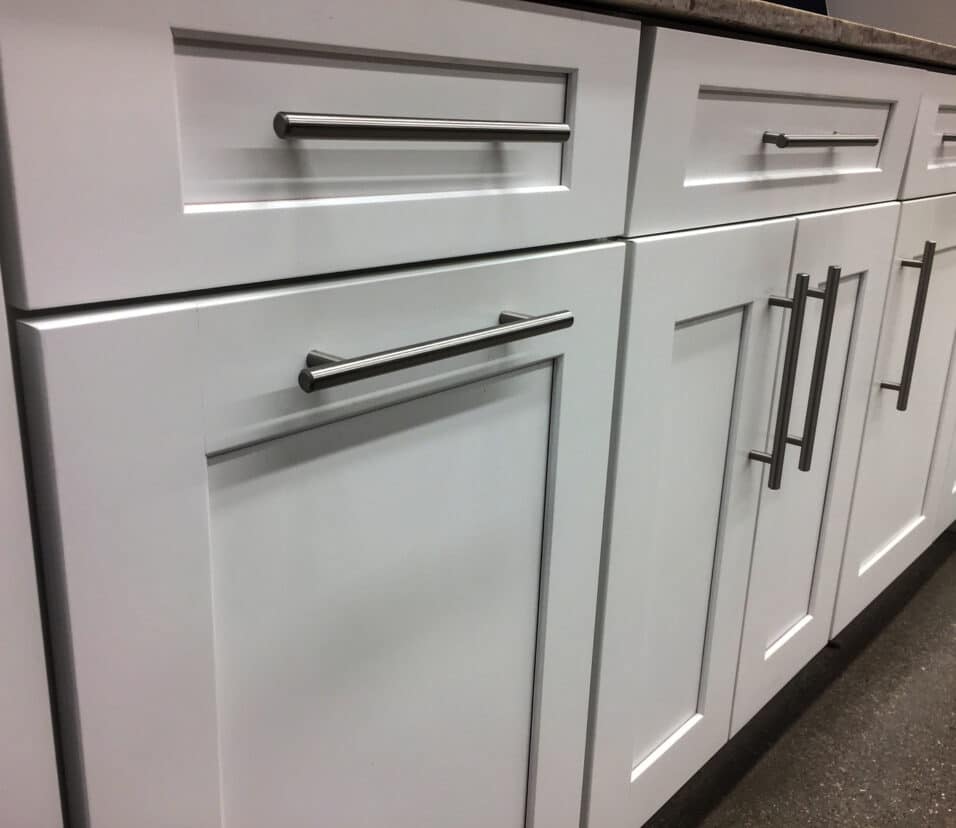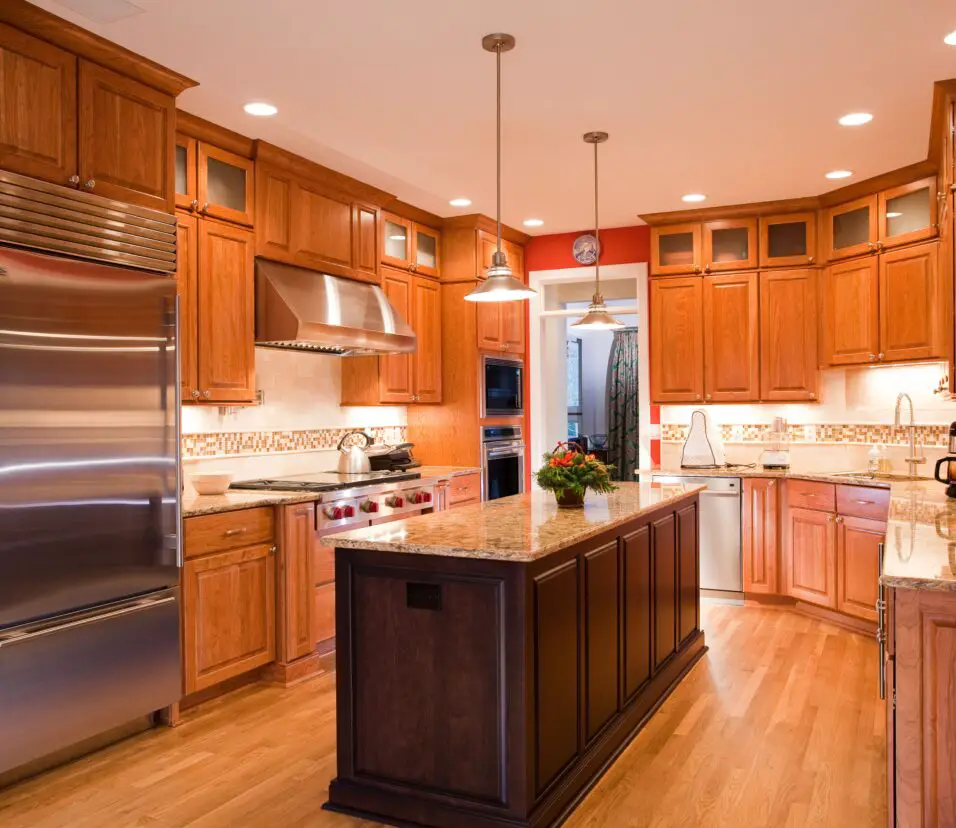Mastering Kitchen Organization: Cabinets, Drawers, Harmony
Introduction
Kitchen Cabinet And Drawer Organization: kitchen cabinets and drawers, transforming your culinary workspace into a haven of order and accessibility. From implementing clever storage solutions to categorizing your cookware, we will explore practical tips and strategies to optimize every inch of your kitchen storage. A well-organized kitchen not only enhances your cooking experience but also brings efficiency and joy to the heart of your home.
Whether you’re a seasoned home chef looking to upgrade your wooden kitchen organization game or a culinary enthusiast embarking on this journey for the first time, our step-by-step approach will help you achieve a clutter-free, well-structured kitchen. Say goodbye to the frustration of digging through heaps of pots and pans and embrace a harmonious kitchen that inspires creativity and convenience.
So, let’s roll up our sleeves, grab those labels and organizers, and unlock the secrets to perfectly organized kitchen cabinets and drawers. Get ready to create a space where everything has its place, making cooking a pleasure and bringing a sense of tranquility to the heart of your culinary adventures. Desperately searching for that elusive spice or utensil, then it’s time to reclaim control over your kitchen space.
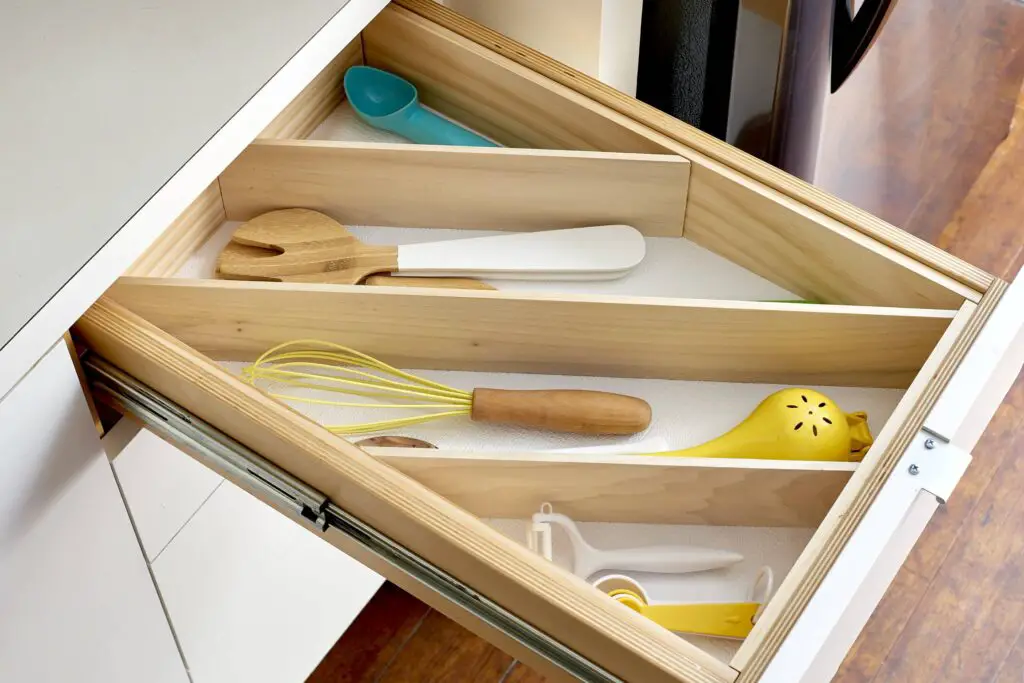
What is the best way to organize your kitchen cabinets?
Most people prefer to separate the food items from the cookware and dinnerware in their kitchen cabinets. So right away you can divide your items into these two groups. Then, subdivide the groups from there.
The first step towards organizing your kitchen cabinets is to declutter and purge. Remove all items from the cabinets and assess each one individually. Keep only the essentials that you regularly use and love. Donate or discard items that have accumulated over time and are seldom utilized. This process creates a clean slate to build an efficient organizational system.
Categorizing and grouping similar items is an efficient way to organize kitchen cabinets. Store like-items together, such as pots and pans, baking supplies, dishes, and glassware. By grouping items, you’ll easily find what you need, reducing the time spent searching through cluttered spaces.
Utilize the full height of your kitchen cabinets to maximize storage. Install stackable shelves or adjustable risers to create additional levels for stacking dishes and pantry items. This simple solution effectively doubles the storage capacity of your cabinets.
Shelf organizers and dividers are indispensable tools for maintaining order in kitchen cabinets. Use them to separate baking sheets, cutting boards, and lids, preventing them from toppling over and creating a mess. Adjustable dividers are particularly useful, allowing you to customize spaces to fit various items.
Where do you put kitchen drawers?
Pans and utensil drawers stored next to the range or cooker top, glassware drawers in the kitchen island, for example. If you like to entertain, organize drawers with chinaware near to a clear countertop for plating up, and keep cutlery and glassware in drawers away from the main cooking area.
Beside the Refrigerator: Consider positioning drawers next to the refrigerator to store various kitchen items, including pantry goods and food storage containers.
Pantry Drawers: Create a pantry station with shallow drawers for storing dry goods like snacks, cereals, and canned goods.
Food Storage Drawers: Dedicate a drawer for food storage containers, lids, and wraps to keep them organized and easily accessible.
Under the Island: If your kitchen has an island, it presents an excellent opportunity to incorporate drawers for additional storage and organization.
Multi-Purpose Drawers: Use island drawers to store kitchen linens, baking sheets, cutting boards, or any other items that require easy access.
Under Wall Cabinets: In smaller kitchens or kitchens with limited floor space, you can utilize drawers beneath wall cabinets for storage.
Coffee or Tea Station Drawers: Create a dedicated drawer for coffee pods, tea bags, mugs, and other beverage-related items near your coffee or tea station.
What should go in kitchen cabinets?
These zones include:
- Everyday Dishes and Utensils.
- Tools for Preparing Meals.
- Baking Supplies (non-food)
- Tools for Cooking.
- Serving and Entertaining items.
- Food Storage.
- Cleaning Supplies.
Store your pots, pans, baking sheets, and casserole dishes in lower cabinets near the stove and oven. Utilize deep drawers for larger items like stockpots and frying pans, while shallow drawers are ideal for baking sheets and lids.
Keep frequently used kitchen utensils, such as spatulas, ladles, whisks, and serving spoons, in drawers or utensil holders near the cooking range for easy access. Store knives in dedicated knife drawers or use magnetic strips to keep them safely organized and within reach.
Arrange your plates, bowls, and cups in upper cabinets or drawers near the dishwasher or sink. Consider using dividers or plate organizers to prevent stacking mishaps and protect delicate dishware.
Dedicate a specific drawer or cabinet for food storage containers and their corresponding lids. Stackable containers and nesting sets help save space and keep the area tidy.
Utilize cabinets or drawers near the food preparation area to store pantry items like dry goods, canned goods, and snacks. Consider using clear containers and labels for easy identification.
Create a designated spice drawer or use a pull-out spice rack near the stove or food preparation area for easy access while cooking. Store condiments in upper cabinets near the refrigerator or dining area for quick and convenient use during meals.
How many drawers should a kitchen have?
Most experts suggest that a kitchen should include at least one stacked drawer cabinet for every double-door cabinet.
The size and layout of the kitchen play a significant role in determining the number of drawers. In a small kitchen, maximizing vertical storage with cabinets may be more practical, while larger kitchens may have ample space for both drawers and cabinets.
Consider your storage needs and how you use your kitchen. Think about the types of items you frequently use and the ones you want to keep easily accessible. Drawers are ideal for storing utensils, cutlery, spices, and smaller kitchen tools. Cabinets are suitable for larger items like pots, pans, and appliances.
Organize your kitchen based on work zones to create an efficient workflow. Group items and storage according to their usage proximity. For example, place drawers near the cooking range for utensils and spices, while pots and pans can be stored in cabinets adjacent to the stove.
Your lifestyle and cooking habits will influence the number of drawers you need. Some people prefer an abundance of drawers for easy access, while others may prioritize open shelving or cabinets for a more minimalist look.
Consider incorporating specialized drawers to address specific storage needs. For example, knife drawers with custom inserts, spice drawers, pull-out trash drawers, or drawers with dividers for baking sheets and cutting boards.
How often should I organize my drawers?
Every month, take everything out of your drawers and refold them. It’s not a very fun job but it will keep your drawers tidy and organized. Plus, it’s a good time to pull out stained or torn clothing to throw away and set aside clothes you haven’t worn in awhile to be donated.
Create a realistic schedule for organizing your drawers based on your kitchen activities and lifestyle. For some, a monthly deep cleaning and organization may suffice, while others may find that a bi-weekly or quarterly routine works better.
Consider organizing your drawers seasonally. As the seasons change, you may find yourself using different cooking tools and utensils. Take this opportunity to rotate items and ensure the drawers are tailored to your current needs.
Don’t wait for the drawers to become overwhelmingly cluttered. If you notice that items are becoming difficult to find or the drawer is getting messy, it’s time to organize it.
After hosting a gathering or completing a significant cooking project, take the time to reorganize your drawers. Items may have been moved around or added during the event, and it’s an excellent opportunity to reset and declutter.
Take a close look at how often you use the items in your drawers and the level of clutter that builds up. Drawers that store frequently used utensils, cutlery, or cooking tools may require more frequent organization than those holding less-used items.
How to organize cabinets cheap?
Try Tension Rods
Place rows of the affordable window-treatment hardware inside a cabinet to create adjustable compartments. Use them to keep plastic food-container lids, baking sheets, or serving trays upright and organized.
Before organizing your cabinets, start by decluttering and purging unnecessary items. Remove expired or unused food items, broken utensils, and mismatched containers. This process creates a clean slate and allows you to see exactly what storage solutions you need.
Instead of buying new storage containers, repurpose items you already have. For example, use old shoeboxes or cardboard boxes to store smaller items like spices or kitchen gadgets. Clean and paint them to match your kitchen’s color scheme for a cohesive look.
Create your own drawer dividers using materials like cardboard, foam board, or wooden planks. Cut them to the desired size and place them inside drawers to keep items separated and organized.
Tension rods can be used vertically in a cabinet to create dividers for pot and pan lids. These rods are inexpensive and can be easily adjusted to fit various cabinet sizes.
Use adhesive Command hooks to hang lightweight items like measuring cups, oven mitts, or kitchen towels on the inside of cabinet doors. They are removable and won’t leave any damage, making them ideal for renters.
Mount magnetic strips inside cabinet doors or on the wall to hold metal kitchen tools like knives, scissors, and spice containers. This keeps your countertops clear and items easily accessible.
What is the best size for kitchen drawers?
The rule of thumb is 1.5 times the length of the drawer slide. If you have a standard depth kitchen cabinet then the normal length of drawer slide is 22”. If you multiply 22” x 1.5 = 33”. You can go wider, but the wider you go the more chance that the slide will not pull out as smoothly as you hope or expect.
The size and layout of your kitchen will influence the size of the drawers you can incorporate. In smaller kitchens, space constraints may limit the size of the drawers. However, larger kitchens with ample space may accommodate larger drawers for storing more extensive cookware and utensils.
Consider how you use your kitchen and the types of items you want to store in the drawers. Frequent cooks and avid bakers may require larger drawers to accommodate pots, pans, baking sheets, and other kitchen tools. If you have specialized appliances like stand mixers or food processors, plan for drawers with sufficient depth to store these items.
Organize your kitchen based on work zones to create an efficient workflow. Group items and storage according to their usage proximity. For example, have drawers near the cooking range for utensils and spices, and drawers near the sink for cleaning supplies.
Typically, standard kitchen cabinet drawers come in widths of 18, 24, 30, and 36 inches. Heights for standard drawers range from 3 to 12 inches. Consider your storage needs and the available cabinet space when selecting drawer sizes.
What material is best for drawer organizer?
The durability of the desk drawer organizer depends on the type of material it is made from. Wood and metal organizers are more durable than plastic ones. However, these are also heavier. Plastic ones are less durable comparatively, but these give off a neater finish on your desk and are lightweight.
They are ideal for organizing utensils, cutlery, office supplies, crafts, and smaller items like spices or sewing materials. The smooth surface of plastic organizers also makes them easy to clean and maintain.
Advantages:
Bamboo is an eco-friendly and aesthetically pleasing material choice for drawer organizers. Bamboo organizers add a touch of natural elegance to your drawers and are perfect for organizing cutlery, utensils, and office supplies. They are durable, easy to clean, and offer a more sustainable option compared to plastic.
Advantages:
Wooden drawer organizers exude a classic and timeless appeal, making them a favorite for many homeowners. They are sturdy and can handle heavier items, such as cooking utensils and tools. Wood organizers often come with compartments and dividers, providing excellent organization options.
Advantages:
Fabric organizers are a softer option, suitable for organizing clothing items, undergarments, socks, or baby items in drawers or closets. They are lightweight and can be folded or collapsed when not in use, making them space-efficient.
Stainless steel organizers are a practical choice for kitchen drawers. They are durable, resistant to corrosion, and easy to clean. Stainless steel organizers are suitable for storing cutlery, cooking utensils, and kitchen tools.
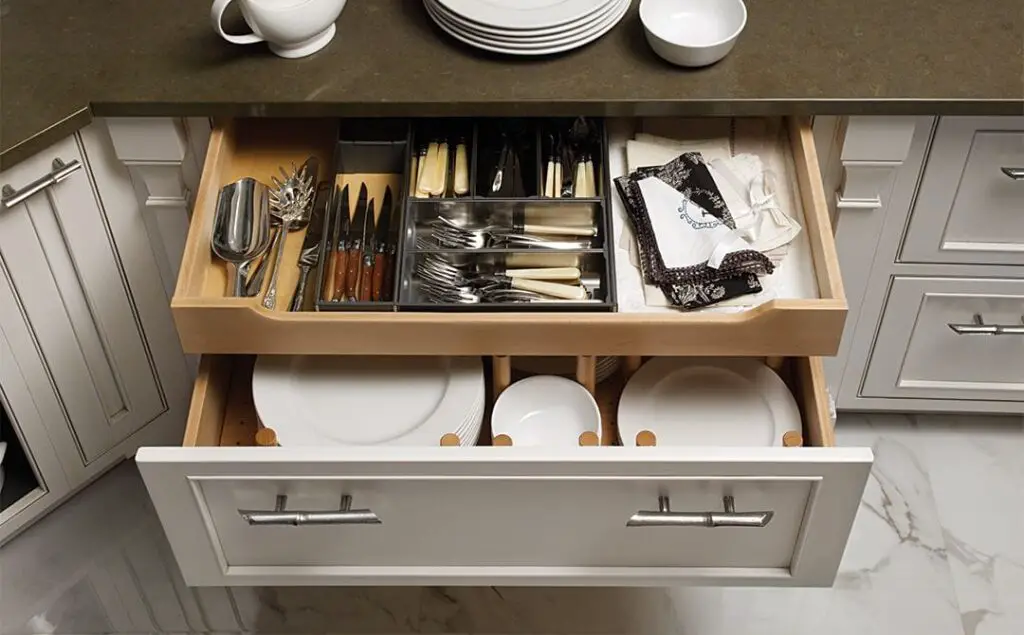
Conclusion
Remember, the key to successful organization lies in decluttering, categorizing, and utilizing smart storage solutions. By removing unnecessary items and keeping only the essentials, you’ve created a streamlined kitchen where every item has its designated place. Grouping similar items together and using organizers and dividers have maximized your cabinet and drawer space, making it easier to find what you need when you need it.
But the work doesn’t end here. To maintain the newfound harmony in your kitchen, make it a habit to return items to their designated spots after each use. Regularly check for clutter and donate or discard items you no longer need. With consistent effort, your main organized and functional for the long term. Organizing your kitchen cabinets and drawers isn’t just about aesthetics; it’s about enhancing your culinary journey. An organized kitchen promotes efficiency, saves time, and reduces stress during meal preparation. Moreover, it allows you to focus on the joys of cooking and experimenting with new recipes, without the distraction of a disorganized space.
As life evolves and your culinary needs change, don’t hesitate to reassess and tweak your organization system to accommodate new items or requirements. Flexibility and adaptability are essential in maintaining an organized kitchen that grows with you. So, take pride in your organized kitchen, and let it be an inspiration for other areas of your life. The skills you’ve acquired here can be applied to other spaces in your home, promoting a sense of order and tranquility throughout. Remember, a well-organized kitchen is a reflection of a well-organized mind.



